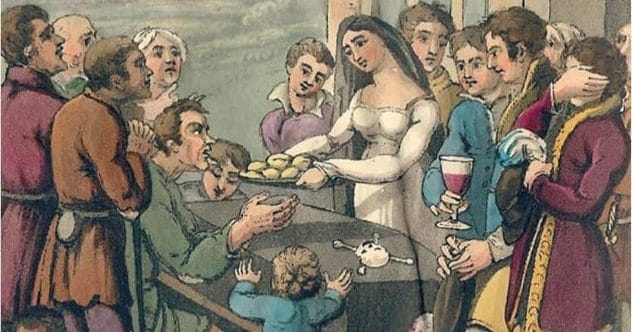The Victorian era’s sin-eaters held one of the most chilling jobs in history. They bore the weight of a community’s sins. The consequences were significant and lasting. It’s easy to see why this profession fills us with intrigue and discomfort.
Families would hire these individuals to absolve the deceased of their sins. This ensured their entry into heaven. The ritual was bizarre. It persisted until about a century ago. But consuming sins wasn’t the worst part. Several other factors made this job unsettling. Here are ten facts about sin-eaters that might make your skin crawl.
10. High Demand for Sin-Eaters
Sin is central to the Christian faith. Freedom from sin is essential for entering heaven. Confession, a Catholic practice, involves admitting sins to a priest. This brings God’s forgiveness. Jesus emphasized this in Luke 11:4.
Death doesn’t always allow for a final confession. Remaining sins could bar a person from heaven. They might become a ghost or end up in Purgatory.
England, Scotland, Wales, and nearby areas found a solution. From the late 1600s to the early 20th century, families hired sin-eaters. These professionals rid the dead of their sins. Nearly every village had one. [1]
9. Consuming Unconfessed Sins
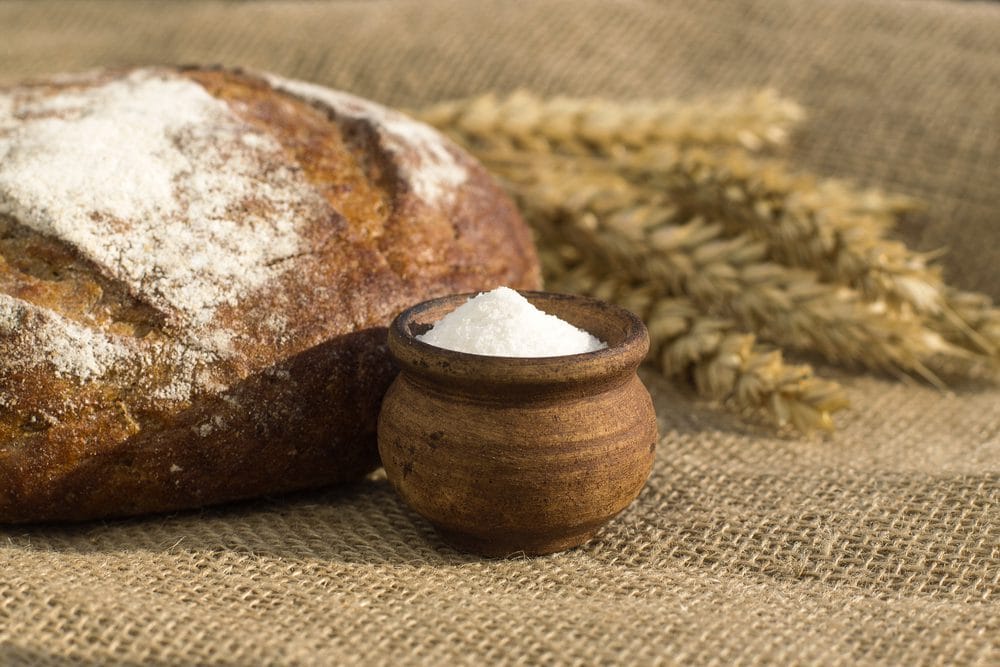
Sin-eating centered on bread, salt, and intention. The family placed bread and salt on the deceased’s chest. This absorbed their unconfessed sins. Alternatively, they waved the bread over the body to collect sins. Then, they sliced the sin-infested loaf and served it.
Professor Evans witnessed the ritual in 1825. He said the family burned the bowl and plate afterward. The family members passed out “arvel” cake to mourners after the sin-eater left. This cake, however, wasn’t related to unconfessed sins. [2]
8. The Simplicity of the Sin-Eating Job
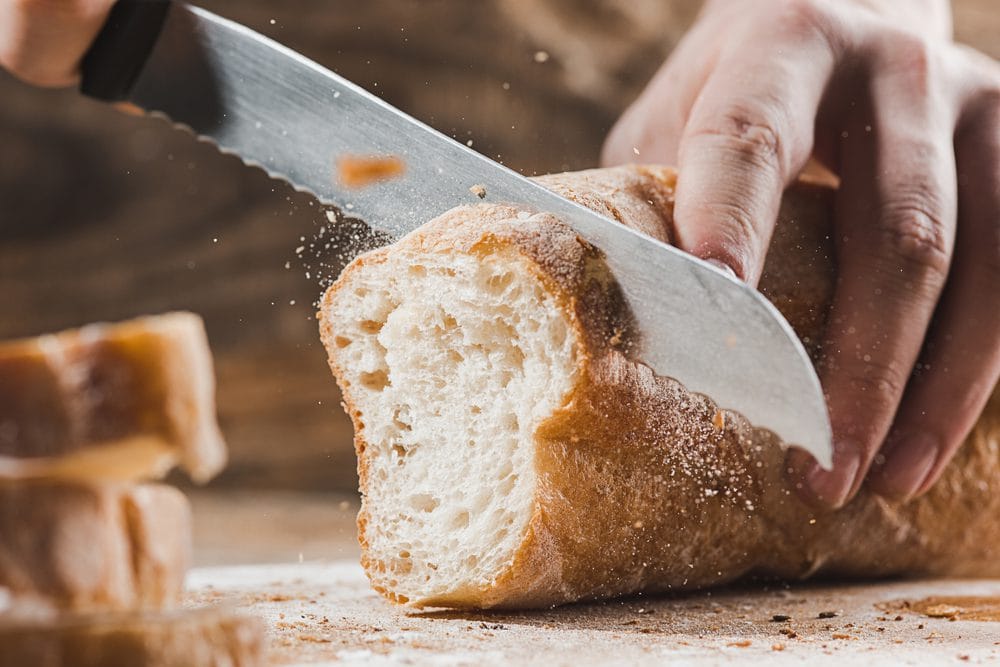
Sin-eating was morbid but simple. The sin-eater attended the wake and funeral upon notification of a death. Sometimes, they were contacted while someone was dying. They received about four English pence as payment, a few dollars today.
The sin-eater entered the room with the deceased. They sat facing the door. They received a slice or crust of the prepared bread and washed it down with ale. Family members mourned and drank ale as the sin-eater ate. The sin-eater concluded the ritual with a short prayer. [3]
“I give easement and rest now to thee, dear man. Come down, not the lanes or in our meadows. And for thy peace, I pawn my own soul. Amen.”
7. The Scapegoat Connection
In February 1931, The Irish Times linked sin-eating to the scapegoat from Leviticus 16. Jewish sources describe Leviticus 16:1-34 as the Torah reading for Yom Kippur morning. The passage focuses on offerings for atonement. It involves three live animals: two goats and a bull. The bull and one goat are sacrificed. The remaining goat, “the scapegoat,” carries the sins of the Israelites.
Leviticus 16:21 reads, “let him confess all the iniquities of the children of Israel… and praying that they may light on his head, he shall turn him out…into the desert.” Leviticus 16:22 states, “And when the goat hath carried all their iniquities into an uninhabited land, and shall be let go into the desert.” [4]
6. Alternative Theories on Sin-Eating’s Origins
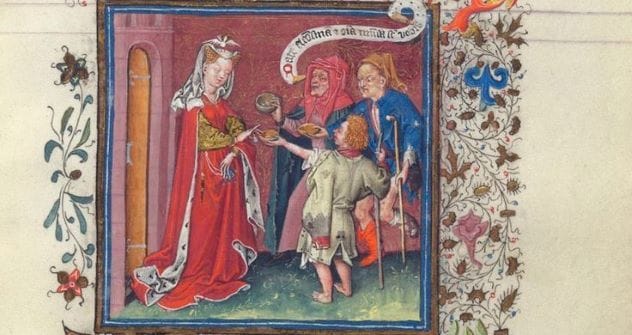
Some believe Jesus Christ was the original sin-eater. He sacrificed his life to cleanse humanity’s sins. This theory persists, though Christianity disapproved of sin-eating. Others suggest the ritual drew inspiration from nobles giving bread to the poor in exchange for prayers.
Ruth Richardson’s Death, Dissection, and Destitute mentions a medieval custom. Noble families gave food to the poor. This encouraged them to pray for the deceased’s soul. Scholars also propose Pagan rituals as inspiration.
Some claim origins in Egypt and Ancient Greece. The use of sin-eaters stemmed from appeasing the deceased. It helped the soul move on and prevented its return. [5]
5. Lack of Appreciation for Sin-Eaters
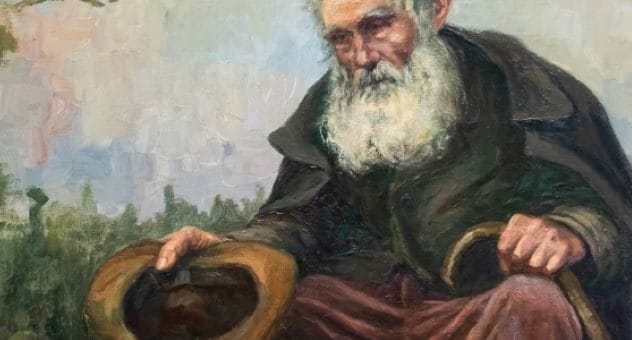
Sin eaters performed a necessary but distasteful job. They became more evil as they worked. Only desperate people took on the role. They valued food and drink over eternal damnation. They couldn’t confess the sins of the dead, so they had no hope for heaven.
The positions were filled by the poor, beggars, or drunkards. Some felt condemned by past sins. Despite this, they provided a valuable service. They deserved gratitude, but instead, they were “driven out of the house with execrations and abuse.” People feared contamination by their presence. [6]
4. Social Outcasts
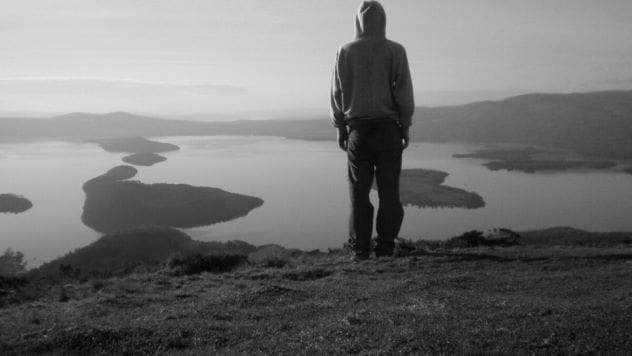
Beyond meager pay and a hostile environment, sin-eaters were social pariahs. They provided the ultimate service but were hated for it. People feared those willing to “pawn their soul.” They avoided them entirely.
People viewed sin-eating as dark magic or witchcraft. It was bad luck to look a sin-eater in the eye. Sin-eaters lived on the outskirts of town, like lepers. They kept their work a secret. [7]
3. The Church’s Opposition
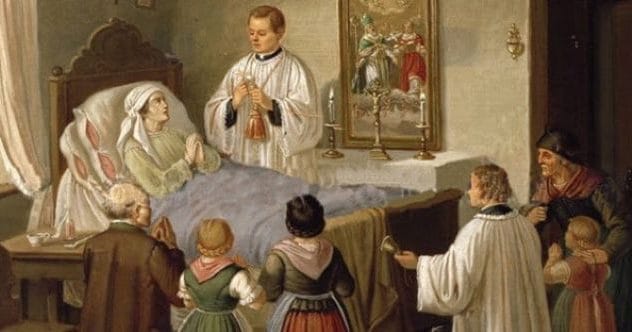
The church didn’t support sin-eating. It replaced funeral rites administered by a priest. The church retaliated by excommunicating, torturing, and killing sin-eaters.
Those who hired sin-eaters were considered heretics. Communities had to be secretive. Some believe sin-eating arose against the church’s sale of indulgences. Others suggest people couldn’t afford a priest. [8]
2. The Last Sin-Eater
Sin-eating died out by the early 20th century. Richard Munslow was the last known sin-eater. He lived in Ratlinghope, England, and died in 1906. Unlike others, Munslow was a respected farmer. He entered the profession out of kindness.
His decision was inspired by the loss of three children. In 2010, Reverend Norman Morris raised money to repair Munslow’s grave. He stated, “This grave…is now in an excellent state of repair, but I have no desire to reinstate the ritual.” [9]
1. Obscured by History
Few first-hand accounts exist about sin-eaters. People avoided association with them. Information comes from limited sources. Brand’s Popular Antiquities of Great Britain, published in 1813, is a key resource.
Megan Campisi researched sin-eaters for her 2020 book, Sin Eater. She noted the lack of available materials. The topic appears in The Order and a Night Gallery episode.
Though obsolete, some see modern parallels. Psychology Today identifies social media moderators as today’s sin-eaters. They consume the worst horrors of the Internet. [10]
“The Sin Eater walks among us, unseen, unheard
Sins of our flesh become sins of Hers
Following Her to the grave, unseen, unheard
The Sin Eater Walks Among Us.” –Megan Campisi, Sin Eater
What do you think about the role of sin-eaters? Leave your comment below!


